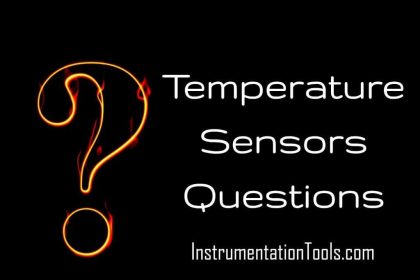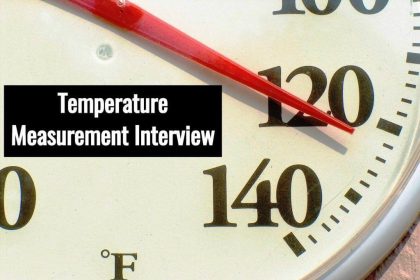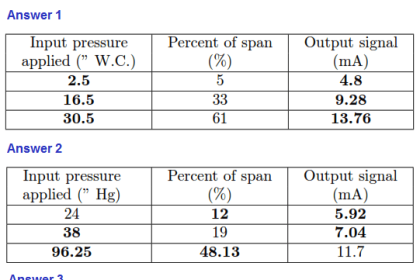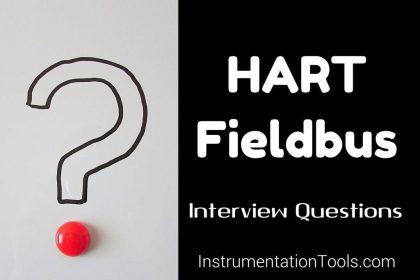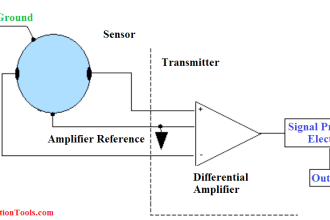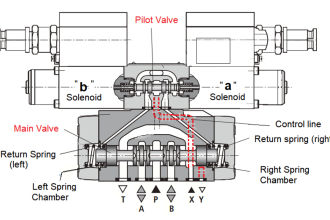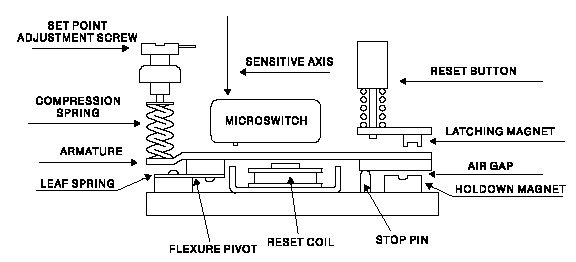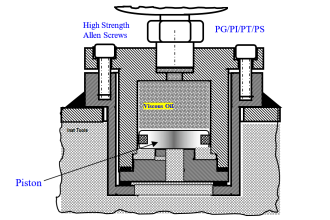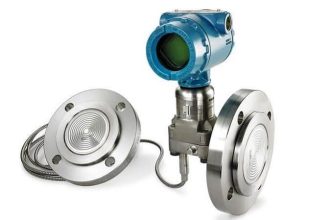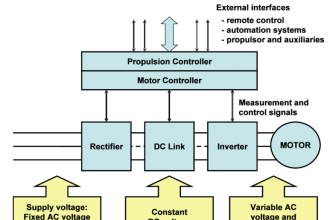Read our Top Biomedical Instrumentation Questions and Answers for your interview preparation and practice exam questions.
Biomedical Instrumentation
Absolute Refractory Period (ARP)
During the initial portion of the action potential, the membrane cannot respond to any stimulus, no matter how intense the stimulus is. This interval is called ARP.
Define Relative refractory period (RRP).
ARP is followed by relative refractory period. During this period, action potential can be elicited by a super threshold stimulus.
What are sensory nerves, motor nerves and mixed nerves?
The nerves that carry the information gathered by the sensory organs to the brain are called sensory nerves. They serve as message carriers for the brain. Motor nerves carry back the orders from the brain to the muscles and glands.
Mixed nerves perform the function of the both sensory and motor nerves.
What are resting potential?
The membrane potential measured when a equilibrium is reached with a potential difference across the cell membrane negative on the inside and positive on the outside is called resting potential.
What is action potential?
When a stimulus is applied to a cell at the resting stage, there will be a high concentration of the positive ions inside the cell. So there will be slightly high potential on the inside of the cell due to imbalance of potassium ions. This is called action potential. Range : 20Mv.
What is bio electric potential?
Certain systems of the body generate their own monitoring signals conveying useful information about the functions they represent. Such signals are bio electric potentials and are related to nerve conduction, brain activity, heart beat etc.
What are the different types of muscles?
Voluntary muscles: work at our will (arm muscle).
Involuntary muscles: work without our knowledge (muscle in the food canal).
Cardiac muscles: help in functioning of the heart and are working day and night without tired.
Define Linearity.
Linearity of an instrument is defined as the degree to which variations in the output of an instrument follow input variation. Whenever the sensitivity of the instrument is constant overall levels of the input, then that instrument has better linearity. Linearity is essential to get accurate values.
State all or nothing law.
Regardless the method of excitation of cells or the intensity of the stimulus, which is assumed to be greater than the threshold of stimulus, the action potential is always the same for any given cell. This is known as the all or nothing law.
What is meant by sodium pump?
It is an active process, by which the sodium ions are quickly transported to the outside of the cell and the cell again becomes polarized& assumes its resting potential.
The operation of this pump is linked with the influx of potassium into the cell, as if a cyclic process involving an exchange of sodium for potassium existed.
Define evoked potential.
Evoked potentials are the potentials developed in the brain as the responses to external stimuli like light, sound etc. The external stimuli are detected by the sense organs which causes changes in the electrical activity of the brain. It is also called Event related potential.
Define ectopic focus.
A portion of myocardium (or the AV node or the specialized conduction system) sometimes becomes “irritable” and discharges independently. This site is called ectopic focus.
Define motion artifacts.
Artifacts are spurious echoes which masquerade as real echoes. These are artificial echoes which appear on the screen.
What is the principle of coulter counter?
A platinum electrode is placed inside the orifice tube and a second electrode is submerged into the beaker containing the cell dilution, creating an electrical circuit between the two electrodes. Current will flow from one electrode to the other through the orifice.
When the cell suspension is drawn through the orifice, cells will displace their own volume of electrolyte and cause a resistance change, which is converted to a voltage change and is amplified and displayed.
Define systolic and diastolic pressure.
Systole is the period of contraction of the ventricular muscles during that time blood is pumped into the pulmonary artery and the aorta. Diastole is the period of dilation of the heart chambers as the blood fills the heart.
For normal adult the systolic pressure is around 140 mm of Hg and diastolic pressure is around 80 mm of Hg. It is measured using noninvasive blood pressure measuring device called as Sphygmomanometer.
Define Wenckebach period.
The electrocardiographic sequence starting with the ventricular pause and ending with the next blocked atrial beat is called Wenckebach period.
Define perfectly polarized electrodes & perfectly non polarized electrodes.
Electrodes in which no net transfer of charge takes place across the metal electrolyte is called perfectly polarized electrodes. An electrode in which unhindered exchange of charge takes place across the metal electrolyte is called perfectly non polarized electrodes.
What is synapse?
Interconnection between two neurons is termed as synapse. They form integral part of neuronal communication.
What is meant by cell?
The basic living unit of the body is cell. The function of organs and other structure of the body are understood by cell organization.
Define transducers.
Transducers are defined as a device which when actuated, transforms energy from one form to another. Generally, any physical parameters are converted into electrical form.
Define sensitivity.
Sensitivity is defines as the electrical output per unit change in the physical parameter. High sensitivity is generally desirable for a transducer.
What are the requirements of amplifiers used in biomedical recorders?
High power gain to activate the pen motor in the display.
An ideal non inverting amplifier to avoid cross over distortion.
Excellent frequency response in the sub audio frequency range
To avoid noise, limited high frequency noise is used.
Give some of the amplifiers used with recorders.
- Differential amplifier
- AC coupled amplifiers
- Carrier amplifiers
What are the electrodes used for ECG?
- Limb electrodes
- Floating electrodes
- Paste less electrodes
What are the different types of electrodes?
Surface Electrodes:
These are used to measure Potentials from the surface of skin and to sense potentials from heart, brain and nerve.
Internal electrodes:
These are used to measure the bioelectric potentials of highly localized extra cellular regions in brain or Potentials from a specific group of muscles.
Micro electrodes:
These are used to measure the bioelectric potentials near or within a single cell. These are also called as intracellular electrodes.
What are the electrodes used for EEG?
- Silver chloride disc electrode
- Depth electrode
- Small needle electrode
- Silver ball or pellet electrodes
- Carbon cloth electrode
What are the electrodes used for EMG?
- Needle electrode
- Coaxial core electrode
- Capacitive type needle electrode
Define Electrocardiograph and Electroencephalograph.
The electrocardiograph (ECG) is an instrument which records the electrical activity of the heart.
It is the instrument used for recording electrical activity of the brain by suitably placing electrodes on the scalp.
Define EOG and ERG.
The measure of corneal-retinal potential is called Electrooculogram (EOG).
The recording and interpreting the electrical activity of eye is called Electro retinogram (ERG).
Define PCG.
Phonocardiograph is an instrument used for recording the sounds connected with the sounds connected with the pumping action of the heart. These sounds provide indication for heart rate, rhythmicity.
Give the disadvantage of using surface electrodes with EMG
Surface electrodes can be used only for superficial muscles
They are sensitive to electrical activity over too wide area.
What is the use of EMG?
EMG is used for the measurement of action potentials, either directly from the muscle or from the surface of the body.
What are the characteristics of a DC amplifier?
It may need balanced differential inputs giving a high Common Mode Rejection Ratio (CMRR).
It should have extremely good thermal and long term stability.
What is a filter?
A filter is often a frequency selective circuit that passes a specified band of frequencies and blocks or attenuated signal of frequencies outside this band.
What is the purpose of electrode paste?
The electrode paste decreases the impedance of the contact the artifacts resulting from the movement of the electrode or patient.
List the brainwaves and their frequency.
- Alpha 8 t-13 Hz
- Beta 13 – 30 Hz
- Theta 4-8 Hz and Delta 0.5-4 Hz
Define the term latency in EMG.
Electromyography (EMG) is a medical technique for evaluating and recording physiologic properties of muscles at rest and while contracting. For nerve conduction studies (NCS) studies, a noninvasive stimulator applies brief electrical impulses to a peripheral nerve transcutaneous, the nerve then transmits the impulse and a response is recorded by electrodes at some distance away.
The time it takes for the stimulus to reach the recording electrodes is called as latency. It can be accurately measured and a velocity of transmission calculated. Healthy nerves will transmit the electrical impulse faster than diseased ones.
Define Einthoven triangle.
The closed path RA to LA to LL and back to RA is called Einthoven triangle. According to Einthoven the frontal plane of the body and cardiac electric field vector forms the two dimensional plane.
List the different types of Surface electrodes.
- Metal Plate electrodes
- Suction cup electrodes
- Adhesive tape electrodes
- Multi point electrodes
- Floating electrodes
List the different types of Micro electrodes.
Metal microelectrodes
Supported metal micro electrodes and Micropipette electrodes
List the different types of internal electrodes.
Wire loop electrode
Silver sphere cortical electrode and Multi element depth electrode
What is hematocrit?
The volume of packed red cells is called Hematocrit. It is expressed as a percentage of the total blood volume. It can be used to calculate the mean cell volume (MCV).
What is fibrin?
One of the proteins, fibrinogen, participates in the process of blood clotting and forms thin fibers called fibrin.
What is korotkoft sound?
When cuff in inflated to a pressure that only partially occludes the brachial artery turbulence is generated in thee blood as it spurts through the tiny arterial opening during each systole.
The sounds generated by this turbulence are called korotkoft sounds.
What are the methods used to measure blood pressure is directly?
Catheterization method involving the sensing of blood pressure through a liquid column. In this method the transducers is external to the body and blood pressure is transmitted through a saline solution column in a catheter to this transducers.
This method also involves the placement of transducers through a catheter at the actual site of measurement in the blood stream. Percutaneous methods in which the blood pressure is sensed in the vessel just under the skin by the use of a needle or catheter. Implantation technique in which the transducer is more permanently placed in the blood vessel.
What is the principle of Plethysmograph?
Principle of operation of plethysmograph depends on Boyle‟s law. Boyle‟s law states that at a given Kelvin temperature the pressure of given mass of the gas is inversely proportional to its volume. (P* Vol = K* temp).
What is the principle of electromagnetic flow meter?
Electromagnetic blood flow meter is based on the principle of magnetic induction. A permanent magnet or electromagnet positioned around the blood vessel generates magnetic field perpendicular to the direction of blood flow.
What is electrophoresis?
Electrophoresis is defined as the movement of a solid phase with respect to a liquid. It is used in the clinical laboratory to measure quantities of the various types of proteins in plasma, urine and CSF, to separate enzymes into their component isoenzymes, to identify antibodies.
Define mobility of a particle.
The mobility of a given particle is directly related to the net magnitude of the particles charge. It is defined as the distance of centimeters a particle moves in unit time per unit field strength, expressed as voltage drop per centimeter.
Discuss about the origin of heart sounds.
With each heart beat the normal heart produces two distinct sounds described as “Lub-Dub”.
The lub is caused by the closure of the atrioventricular valves, which permits flow of blood from the atria into the ventricles .this is called the first heart sound, it occurs approximately at the time of the QRS complex of the electrocardiogram.
The dub part of the heart sounds is called the second heart sound and is caused by the closing of the semilunar valves, occurs about the time of the end of the T wave of the cardiogram.
A third heart sound is heard especially in young adults. Atrial heart sound is not audible and it occurs when the atria do not contract.
What is auscultation?
The technique of listening to sounds produced by organs and vessels of the body is called auscultation.
What is myocardial infarct and angina pectoris?
An obstruction of part of the coronary arteries that supply blood for the heart muscle is called myocardial infarct or heart attack, whereas merely a reduced flow in the coronary vessels can cause a severe chest pain called angina pectoris.
What is aging?
Apparent error on PO2 measurement is a gradual reduction of current with time, almost like the polarization effect described for skin surface electrode. This effect is called aging has been minimized in modern PO2 electrodes.
What is Beer’s law?
The amount of the light absorbed depends only on the no of molecules of the absorbing substance that can interact with the light. The absorbance is the same if the cuvette has the path length L, but concentration of the solution is doubled.
A = ABC (Beer‟s law), C = Path length of the cuvette,
B = Concentration of the absorbing substance,
A = Absorbtivity, a factor that depends on the absorbing substance.
What is Fluorescence?
Certain chemicals when illuminated by light with a short wavelength in the ultraviolet (UV) range emit light with a longer wavelength. This phenomenon is called fluorescence.
What is meant by Doppler Effect?
The frequency of the reflected ultrasonic energy is increased or decreased by a moving interface.
The amount of frequency shift can be expressed as, f=2V/λ,
f=shift in frequency of the reflected wave,
V=velocity of the interface,
λ=wavelength of the transmitted ultrasound.
The frequency increases when interface moves towards the transducer & decreases when it moves away.
Give the methods for measuring blood flow.
Indirect method
sphygmomanometer.
Direct method
Percutaneous insertion
Catheterization (vessel cut down)
Implantation of a transducer in a vessel or in the heart.
What is cardiac output and its normal rate?
Blood flow is highest in the pulmonary artery and the aorta, where the blood vessels leave the heart. The flow at these points is called cardiac output, is between 3.5 and 5liters/min in a normal adult at rest.
What are the causes of Cerebrovascular accident (CVA)?
When the blood flow in a certain vessel is completely obstructed, the tissue in the area supplied by this vessel may die. Such an obstruction in a blood flow of the brain is one of the causes of CVA or stroke.
What are the methods involved in direct blood pressure measurement?
- Auscultator method
- Palpatory method
Give the principle of transduction of heart sounds.
The sounds and murmurs which originate from the heart can be picked up from the chest using stethoscope or by transduction of heart sounds in to electrical signal.
Define nuclear magnetic resonance signal.
A patient in an external magnetic field causes the magnetization of protons of hydrogen atoms in his body.
Due to magnetization, these protons align and precess about the external magnetic field, now a radio frequency pulse at resonance frequency is transmitted into the patient under controlled condition. The resonance condition proton responds by emitting radio frequency signal. This is called nuclear magnetic resonance signal.
What is Biotelemetry?
Bio-telemetry is the electrical technique which permits examination of the physiological data of man or animal under normal conditions and in natural surroundings without discomfort to the patient under investigation.
Give the block diagram of a bio-telemetry system.
What is a single channel radio telemetry system?
In single channel telemetry a miniature battery operated radio transmitter is connected to the electrodes of the patients. This transmitter broadcasts the bio potential to a remotely located receiver, which detects and recovers the radio signals for further processing. FM or AM transmission is used.
What is a single channel radio telemetry system?
In multichannel telemetry, parameters such as ECG and heart rate, respiratory rate, temperature and blood pressure can be transmitted simultaneously with appropriate pre-amplifiers, no. of sub carriers and modulators same as the no. of signals. Pulse width modulation is better suited.
Define – radio pill.
It is a pill that contains a sensor plus a miniature transmitter is swallowed and the data are picked up by a receiver and recorded. Such radio pills are used to monitor stomach pressure or pH.
How telemetry can be used in transmitting stimulus signals to a patient?
If an electrode is surgically implanted and connected to dead nerve endings, an electrical impulse can sometimes cause the nerves to function as once they did. If a miniature receiver is implanted subcutaneously, the electrical signal can be generated remotely and transmitted to the patient.
This point brings up the possibility of using telemetry therapeutically.
What is micro shock?
A physiological response to a current applied to the surface of the heart that results in unwanted stimulations like muscle contractions or tissue injury is called micro shock. It is caused when currents greater than 10µA flow through an insulated catheter to the heart. Proper protection circuits should be used to overcome the micro shocks.
What is macro shock?
A physiological response to a current applied to the surface of the body that produces unwanted stimulation like muscle contraction or tissue injury is called macro shock. Taking the least body resistance to be 1K ohms the inter electrode voltage on the order of 75-120V could be dangerous.
What is GFI?
Ground fault interrupter protects patients against a macro shock that occurs if a person touches the hot lead with one hand and the ground with the other.
What is a Defibrillator?
A defibrillator is an electronic device that creates a sustained myocardial depolarization of a patient‟s heart in order to stop ventricular fibrillation or atrial fibrillation.
What is meant by therapeutic effect of heat?
When tissue temperature is increased using diathermy, it results in hyperemia-an increase in blood flow through that part due to dilation of arteries and reduction in hydrodynamic impedance.
Since pain is due to an oxygen deficiency in the tissues and an accumulation of pain eliciting (inducing) substances, the increased blood flow results in increased oxygenation and removal of these substances. Thus pain is reduced.
What is thermograph?
The human skin is almost a perfect emitter of infrared radiation proportional to the surface temperature at any location of the body.
Thermograph is an infrared thermometer incorporated into a scanner so that the entire surface of a body or some portion of the body is scanned and the infrared energy is measured and used to modulate the intensity of a light beam that produces a map of the infrared energy on photographic paper.
What is endoscopy?
It is a tubular optical instrument to inspect or view the body cavities, which are not visible to the naked eye normally. Gasto-intestinal, fiberoscope (intestinas), Broncho fiberoscope (trachea), Laparosope (abdomen), Sigmoidoscope (rectum), Cystoscope (urinary bladder) etc.
Give the non-surgical applications of laser.
Low power lasers induce subtle chemical enzymatic or metabolic changes in the human body.
The wavelength coherence and power of the laser can be controlled to generate such photo biological effects. They are also used to cure skin cancers like oral carcinoma.
What is photocoagulation?
Heating of tissues to about 60 deg. denatures the proteins, thereby arrests bleeding. The target molecules used for light absorption are hemoglobin and pigment epithelium.
Laser photocoagulation is used in surgery of spleen, liver and kidneys.
What is the principle of cryogenics?
When tissues are at 20 deg, there is a formation of ice crystals and increase of salt concentration within the cell. Thus neurosis of the tissue takes place.
This method of killing diseased cells is called cryogenics, which is painless. Liquid nitrogen is used for this purpose and is used for blood clotting in surgery.
Give the principle of Electro surgical coagulation.
High frequency current is made to flow through the tissue thereby causing coagulation from inside of the tissue just under the electrode. It‟s another method used in modern surgery for reducing blood loss.
Define electrotomy.
When the electrode is kept above the skin an electric arc is sent. The develop heat produces a wedge shaped narrow cutting of the tissue on the surface. By increasing the current level, deeper level cutting of the tissues takes place. Normally continuous RF current is used for cutting.
What is desiccation?
The needlepoint electrode are struck into the tissue and kept steady while passing electric current.
This creates a high local increase in heat and drying of tissues. This is called desiccation which produces dehydration in the tissues.
What is the cardiac pacemaker and why is it used?
It is an electrical stimulator that produces periodic electric pulses that are conducted to electrodes located on the surface of the heart (Epicardium), within the muscle (myocardium) or within the cavity or the lining of the heart (Endocardium).
What is NSR?
NSR- Normal Sinus Rhythm, Any change in the NSR results in a condition called Arrhythmia.
It can also cause Bradycardia. A condition of slow heart where the heart rate reduces to 30-50 beats per minute (BPM) resulting in insufficient blood supply to the human body. It causes dizziness and loss of consciousness.
List the types of PM on the basis of electrodes used.
Unipolar-single electrode in contact with the heart and the other electrode is a reference electrode which is placed anywhere else in the body. Bipolar two electrodes are placed on the heart and stimulus is applied across them.
What is demand Pacemaker?
It is a pacemaker with the feed back loop which detects the QRS complex of ECG signal from electrodes and amplifies it. This resets the timer present inside and the heart rate is maintained at 60-80 BPM.
What is meant by Atrial Synchronous Pacemaker?
It detects the electrical signal corresponding to the contraction of atria and uses appropriate delays to activate a stimulus pulse to the ventricles.
What is cardiac fibrillation?
It is a condition wherein the individual myocardial cells contract asynchronously with only very local patterns relating the contraction of one cell and that of the next. It causes irreversible brain damage.
Define Cardioverter.
Defibrillator pulse must be synchronous with the R wave of the ECG so that it is applied to a patient shortly after occurrence of the R wave. It treats the atrial arrhythmia which is like a flutter/atrial tachycardia causing the ventricles to contract at an elevated rate.
What is ventilator?
Ventilator is a device used in intensive care unit to provide oxygen enriched, medicated air to a patient at a controlled temperature. Ventilators can operate in different modes: Controlled mode and assist mode.
Define Dialysis.
It is used in the treatment of acute or chronic renal (kidney) failure. It is a process which involves removal of waste products from blood and obtaining normal pH.
Define the term Electrotherapy.
Simulators are used for treatment of paralysis with totally or partially denervated muscles, for the treatment of pain, muscular spasm and peripheral circulatory disturbances. This technique is called Electrotherapy which uses low volt, low frequency impulse currents.
Define Hemodialysis.
It is the removal of chemical substances form the blood by passing it through tubes made of semipermeable membrane.
What is Diathermy?
The term Diathermy means „through heating‟ or producing deep heating directly in the tissues of the body. In the practice of physiotherapy, diathermy is used for producing heat stimulus by application of high frequency energy.
Define Blending.
When the electrode is kept above the skin, the separated tissue or nerves can be welded or combined together by an electric arc. This is called blending.
What are bladder stimulators?
Bladder stimulators are those which activate the microurition reflex by remote electronic stimulation of a permanently implanted spinal electrode.
What are the advantages diathermies?
The subject‟s body becomes a part of the electrical circuit and heat is produced within the body and not transferred through the skin.
The treatment can be controlled precisely. Careful placement of the electrodes permits localization of the heat to the region to be treated.
What is condenser method of shortwave diathermy?
In the „Condenser method‟, the output of the diathermy machine is connected to metal electrodes called PADS. They are placed on the body so that the portion of the body sandwiched between them acts as dielectric of the capacitor.
What is the different electro surgery techniques used in diathermy unit?
Fulguration
The term „fulguration‟ refers to a superficial tissue discoloration without affecting deep-seated tissues.
Desiccation
The needle point electrodes are struck into the tissue and kept steady while passing electric current. This creates a high local increase in heat and drying of tissues takes place. This is called „desiccation‟ which produces dehydration of tissues.
Electrotomy
When the electrode is kept above the skin, an electrical arc is sent. The heat developed produces a wedge shaped narrow cutting of the tissue on the surface.
Coagulation
When the electrode is kept near the skin, high frequency current is sent through the tissue in the form of bursts and heating it locally so that it coagulates from inside
What is microwave diathermy?
Microwave diathermy involves the process of irradiating tissues of the patient‟s body with very short wireless waves having frequency in the microwave region.
Typically, the frequency used is 2450 MHz corresponding to a wavelength of 12.25 cm. Heating effect is produced by the absorption of the microwaves in the region of the body under treatment.
What is the principle of ultrasonic diathermy?
In this method, the heating effect is produced because of the ultrasonic energy absorption property of the tissues. The amount of energy absorbed by the tissues is depending upon the frequency of ultrasonic waves from a conventional crystal oscillator.
What are cerebellar stimulators?
In case of epilepsy, chronic stimulation to the cerebellum is provoked by transcutaneous inductive coupling, through an antenna fixed subcutaneously on the chest.
The electrodes are placed on anterior or posterior lobe of cerebellum. Such stimulators are called cerebellar stimulators.


